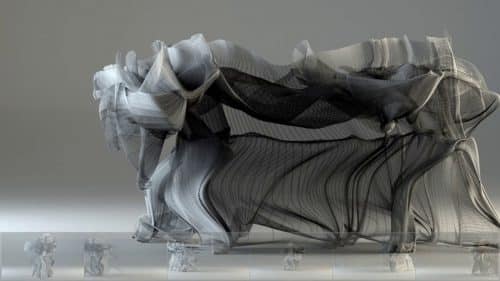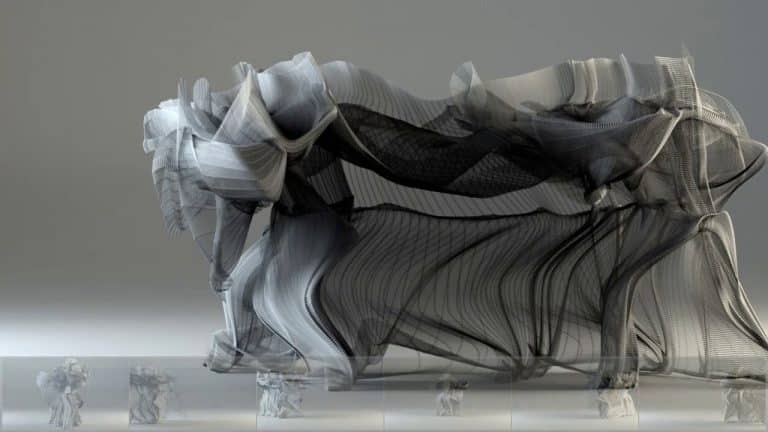How mirrors could solve our energy problem? Physics Girl visited a giant field of solar mirrors to answer this question!
Transcript:
As you drive south away from Las Vegas, you come across enormous shining towers. But the amazing fact is that the towers are pitch black. This is 4,000 acres of mirrors. And the light is shining up from the ground because this site is a $2.2 billion solar energy field.
I’m Dianna, and you’re watching physics girl, and we’re going to go inside a power plant with the same technology as that one. I was approached by Toyota, who offered to sponsor a series on renewable energy, and you have made it to the final video in that series. But why? Why did we make a road trip for two weeks across California on a car powered by hydrogen fuel cells? We want a future with cleaner air, a future where we are not using an energy source that will run out. And I learned that the roadmaps to get us to zero emissions by 2050 are very exciting, but we have a lot of work to do.
Most people think of photovoltaics when they think of solar power, the solar panels on your roof, but there’s a whole other technology. Have you guys seen this? This is not a simulation. I’ve been past the first concentrated solar site that I ever saw. And I was like, pull over. We have to figure out what this thing is.
So it doesn’t convert sunlight directly to electricity as photovoltaics does. It uses lots of mirrors to generate heat by concentrating the sunlight onto something to heat it.
I found out later that it’s this technology called concentrated solar power, CSP. That’s super promising. It’s been around for even longer. And there’s a ton of potential to pair it with energy storage, which is the whole reason we made the last video. Plus, those mirrors look so cool. That’s the technology we’re going to talk about in this entire video.
I was like a kid in a candy store. So how does concentrated solar power work? I think that you guys, at the spine, get the sense that nearly everything runs with a turbine? No? Coal power plant? Turbine. Hydroelectric? Turbine. Grid-scale stuff that involves heat often involves a turbine. The same is true here.
The ultimate goal of concentrated solar power is to drive a turbine. The sun hits mirrors that then reflect a special material and heat it, and that material boils water, and then the steam drives the turbine that creates electricity. And we took a look at this process during a tour of the Mojave Solar Project. To be clear, the plant that we toured looks very different from the solar towers I was talking about. It’s parabolic mirrors instead of the towers, but conceptually it’s very similar. It uses mirrors to concentrate solar light. And we got access to Atlantica’s parabolic mirrors to learn how concentrated solar power work.
So we can work a little bit backward on how the energy gets to the grid. And then it will work back to the sun.
So please, join us on the rewind tour. As we started the tour, there was a dress code. We had to wear long sleeves and long pants when we went into some places like the turbine room and earplugs.
On the other end of the dark gray building is where the steam turbine is. – That was, I think, the loudest place we went.
That’s the high-pressure turbine there. And that’s the exhaust of that turbine.
So after we went to the turbine room, I think he asked, like, do we want to go to the top? And before anyone could say, I don’t know if that’s a good idea. I was like, “Yes! I wanna go to the top”.
Do you want to go up there?
Yeah, sure.
All right.
It was high. We were climbing rungs. Holding these thin rungs with super sweaty hands, and through that, like, cage-like thing. We didn’t film any interesting conversations, but we could see a couple of things were out to the towers where the electricity is transmitted to the grid. And then we could finally see for the first time how big these facilities are. You get up to the top and then look out over this ocean, a sea of mirrors out for one mile. Turn around, another mile in the other direction. I didn’t mind that I couldn’t hear anybody because I just wanted to soak it all in. A single plant like this can power over 200,000 homes. We’re talking, saving hundreds of thousands of tons of CO2 emissions every year and so going backward. So we’ve got a turbine, and we got one that goes with steam. So where the steam is created as to where the material, the hot material are coming in and creating steam. These are the steam generators?
Yep. It’s a natural circulation. So the bottom part is where you’re boiling the water. The water is going up, and you have the steam drum on the top. Is dripping back down and creating a natural circulation loop. So it’s cool stuff. – I remember being curious like I didn’t understand how the material came in. They call it the heat transfer fluid, how it came in and, you don’t let it just flow with the water.
Inside here, if we were to take this out, there are thousands of tubes. They’re at a U, and then it comes back and goes out. The heat transfer fluid should be coming in here, all right?
That was the cool thing that I learned. Is that it’s not just creating steam. It is creating something called saturated steam, where steam, like the gas form of water and liquid water, exists together at the same temperature because it’s at such high pressure. And then that’s a lot to expand out later, once it gets to the turbine to push the turbine. And then, he pointed out where the heat transfer fluid is coming in.
It looks like we’re coming in here and then out this way, like that.
So that’s moving all the heat transfer fluid around.
I have to talk about what is getting heated up by the sunlight when it hits the mirrors. Again, this plant works differently than the solar towers near Vegas. Instead of a big tower, the light is being reflected in glass tubes near the mirror. So there are these tubes that carry a synthetic oil that they call the heat transfer fluid or the HTF. That oil gets up to about 400 degrees Celsius. It’s just continually flowing in a circle around the entire power plant. I can’t believe they had all these numbers, but there are 2 million gallons of this stuff. Is it the same fluid that’s been in there since the beginning?
Yep.
And then we went on to the best part. Step number one on the energy process is the mirror itself. Well, there’s a sun, but you know, we didn’t visit that. Oh my gosh. Wow. Oh my gosh. It’s so bright. Woo. That was so amazing. Interestingly, the tubes carrying the heat transfer fluid right up where the mirrors expanded in length. – It’s going to grow maybe half a meter when it goes from cold to hot. That’s like just having a little expansion, like a slinky almost, except for its seal.
The mirrors themselves are parabolic, and they track the sun so that the sun rays come in and are reflected and focused up to the tubes running across the center at the focal point of the mirrors.
We have 282 kilometers of this too. Right. So from here, if you wind them all up in a row, you can go to Vegas.
And they’re exactly at the focal point. The guy kept mentioning it, and he was like, “Yeah, we can walk up to it, and you’ll start to feel when it gets hot.” And he was like, “I think we can get up to about here.” We got up to about there. And we were like, oh, back up.
You feel that, right?
Oh. Yeah. That’s hot.
Oh yeah.
And our poor cameras kept over-heating.
Oh, that’s true
And we can tell, as soon as they took the mirror that they moved down for us and focused it back, that was, probably, the most magical moment for me. Because the entire tube looked like it froze over. Wow. Oh my gosh, that was cool. Not every plant uses synthetic oil, though. In some of the solar towers, the heat transfer fluid is molten salt. In some of the towers, the light directly heats the water to create steam. And newer plants are looking at other materials like sand. We’re going to get to that in a minute. So why don’t we see more of these sites? Well, there are a few challenges for concentrated solar power. For one, photovoltaics are very cheap. Also, there’s a limited number of contracts. I came into this entire series being like, “We’re gonna learn about the best technology, and that’s gonna be the one that goes in everywhere.” But I realized very quickly. It’s not that simple. There’s a lot more involved in power purchase agreements. So we talked in the last video about how sometimes these renewable energy plants can sometimes produce more energy than the grid needs. And at this site, they told us they’d done that where they’ve turned down the turbine because if they produce more electricity than they’re contracted to, they’re going to be charged money for it. But the way a lot of experts are looking to get around this is by adding energy storage. I was really curious about what the future was going to look like. So I reached out to Cliff Ho, a scientist at Sandia National Labs, one of the lead researchers in concentrated solar power.
What you looked at was called a parabolic trough. And the difference between that and these large towers that you might see, it’s the towers that are receiving more attention to get to the higher temperatures, which can enable higher efficiency.
So Cliff’s project just got awarded one of the biggest DOE grants. This is what’s different and exciting about Cliff’s technology.
And so, the department of energy put out a call earlier this year. Secretary Granholm announced they had selected our team and the Particle Pathway. And it has the advantage of going to very high temperatures, well over 1,000 degrees celsius.
The efficiency of your engine, your heat engine depends on the temperature of it. So the hotter you can get the hot thing, the higher the efficiency. This is just called the Carnot efficiency of a heat cycle. So that’s what they are trying to do.
The synthetic oils parabolic troughs about 400 degrees Celsius. A power tower, the towers with molten salt, about 600 degrees Celsius: and right now, with our particles, you know, we can get over 1,000 degrees Celsius.
By using these particles that look like sand, their falling particles, like a waterfall of sand.
So everything is just gravity-driven. That’s kind of cool. Everything falls by gravity.
And then the sun is all concentrated up to that sand, heats that directly. And then the sand is brought back up on an elevator, and that’s the innovation. It seems pretty simple, and you heat sand. But the thing that’s so innovative about it is that it incorporates energy storage. Because renewables are intermittent. The sun only shines during the day, and the wind doesn’t blow all the time. And since our grid is on-demand, then you need storage for the other times.
If you don’t have storage with concentrating solar thermal power, you might as well go with photovoltaics.
So when I first heard about this, they were like, “It’s the solar energy that produces solar after the sun goes down.” And I was like.
So the existing systems, you know, today there’s nearly 30 gigawatt-hours of storage globally with the CSP systems that currently exist. And in many of those existing systems, they’re storing it for 10 hours. The discharge can be for over 10 hours and sometimes are even 15 hours. So, in other words, you’re running the turbine. You’re generating electricity at its capacity, nameplate capacity, for a long period.
It takes some time for the stuff to cool down. You can store heat in the sand or the molten salt and then use it at night time. And, Atlantica, the company that owns the Mojave Solar Project, owns another site that already incorporates storage. So that is the promise of concentrated solar power. This technology is looking to improve the cost of materials, availability of materials, efficiency, so getting hotter. And storage. Right now, what we’re seeing is it’s starting to solve a modern problem. As they say, in the energy sector, “Modern solutions for old pollution.” They don’t say that, but they should. Thank you so much for watching. If you haven’t seen the rest of the videos in this series, I will link them in the description. Thank you to Toyota for sponsoring this series. Thank you to you guys so much for coming with me on the road trip. Thank you to everybody who contributed research. I learned so much. I hope you learned something too. Happy physicking.











